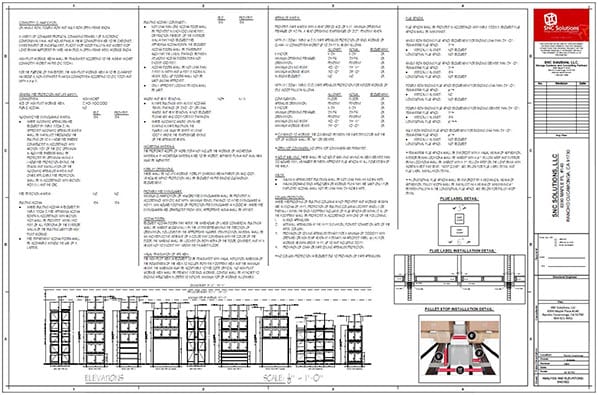High Piled Storagein Southern California
WHAT IS HIGH-PILED STORAGE?




THE FIRE DEPARTMENT HAS THREATENED TO SHUT ME DOWN. CAN YOU HELP?
HOW HIGH CAN I STORE?
WHAT COMMODITY AM I STORING?
The Fire Department breaks down products that are stored in a warehouse into different “commodity classifications”. These classifications break all products into Class I-IV and High Hazard/Group A plastics. The higher the classification, the more dangerous the Fire Department deems a product to be. The more dangerous a product, the more requirements you must meet in order to store this product. Here are a few examples for each class:
Class I: Ceramics, glass, metal products
Class II: Incandescent or fluorescent light bulbs in cartons, foods in combustible containers, alcoholic beverages not exceeding 20% alcohol in combustible containers
Class III: Charcoal, wooden furniture, paints, sugar
Class IV: Synthetic clothing, oil-based paints, linoleum products
High Hazard/ Group A Plastics: Idle pallets, rubber tires, foam plastics, polyethylene
If you want an in-depth analysis of your product or would like to know the way a commodity classification can affect your top of storage, give us a call and we would be happy to walk you through it.
CAN YOU HELP ME DO WHAT IT TAKES TO BECOME COMPLIANT?
Not only can SNC help you create a plan to become compliant, our team can give you a turn-key number on exactly what it will take in order to achieve compliance. Our capabilities for scope of work include rack installation and reconfiguration, sprinkler system upgrades, in-rack sprinkler installation, exit door installation, smoke vent installation and much more.

WHAT SPRINKLER SYSTEM DO I HAVE?
- Early Suppression Fast Response (ESFR) systems- these systems are far and away the most flexible sprinkler system to have in your warehouse. Having an ESFR system generally provides the highest Top of Storage for Class I-IV and Group A plastics without any additional upgrades required. Of course, there are some exceptions. Give us a call and we’d be happy to talk about them with you.
- Control Mode Density Area (CMDA) systems- these systems are the most common sprinkler systems that we deal with. The hydraulic calculations determine whether the system can provide sufficient protection for your Class I-IV commodities. In most cases these systems are not sufficient to store Group A plastics without any additional sprinkler upgrades.
- Pipe Scheduled systems- these systems are only found in older buildings, typically built in the 1950s or before. Fortunately (or unfortunately for tenants), sprinkler technology as well as fire code has evolved a great deal since the installation of these systems. Typically, high-piled storage is not feasible with these systems without sprinkler upgrades.
DO I NEED A STRUCTURAL PERMIT IN ORDER TO HAVE A HIGH PILED PERMIT?
If you are using any sort of structure over 5’9″ to store your product, then the fire department requires you to have a structural building permit. The fire department wants to make sure that whatever structure you are using to store your product is not a safety hazard both to your business as well as any fire fighters that will enter the building. You would not need a structural permit to obtain a high-piled storage permit if you are “floor stacking” your product, or the product is not being set upon any shelving units, pallet rack, or analogous product. Learn more about Structural Permits here.